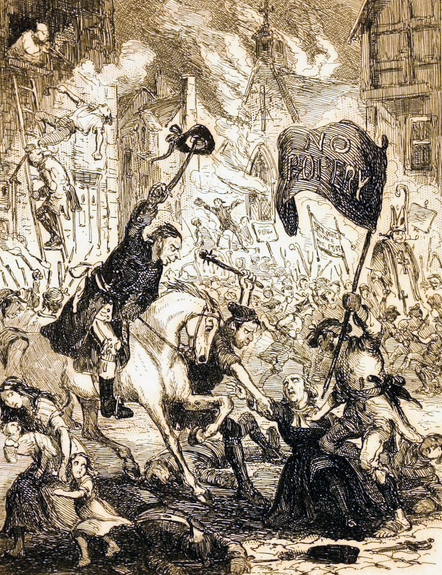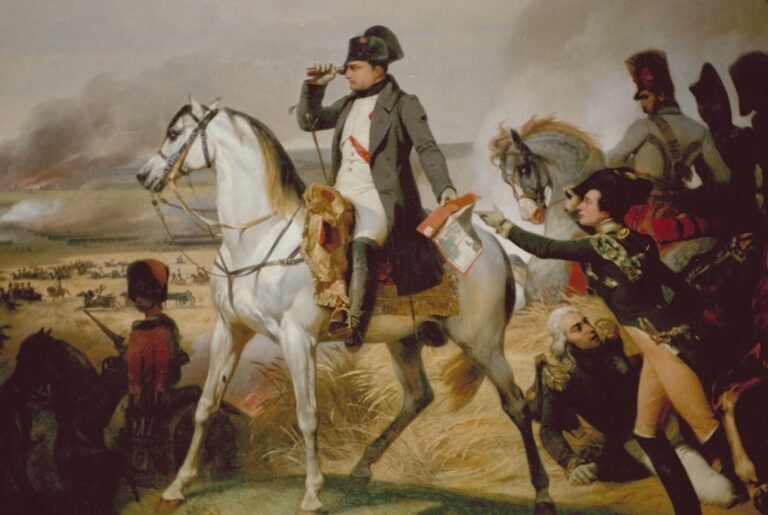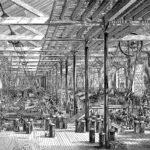The East India Company changed the course of history. This powerful trading company shaped the world we know today.
Founded in 1600, the East India Company started as a group of English merchants. They wanted to trade with the East Indies. Over time, it grew into a mighty force. The company traded goods like spices, tea, and silk. It also played a key role in colonizing parts of Asia.
This post will explore the East India Company’s rise, its impact on trade, and the lasting effects it left behind. Understanding this company helps us see how trade and power influenced the world. Dive in to learn about the East India Company and its remarkable journey.
Origins Of The East India Company
The East India Company was a powerful force in the 17th century. Its origins lie in a quest for trade and prosperity. This section dives into the birth and early years of this influential company.
Founding And Early Years
Founded on December 31, 1600, the East India Company received a royal charter from Queen Elizabeth I. A group of merchants eager to capitalize on the lucrative spice trade formed it. They aimed to break the Dutch monopoly in the East Indies.
Early on, the company had limited resources. It operated with a few ships and modest capital. Despite these challenges, the company expanded its influence rapidly. By the mid-17th century, it had established several trading posts in India. These posts, known as factories, were the backbone of its operations.
Initial Trade Ventures
The East India Company’s first voyage set sail in 1601 under the command of James Lancaster. The fleet of four ships returned with spices, which brought significant profits. This success encouraged further expeditions to the East Indies.
In the following decades, the company expanded its trade network. It established strong relations with local rulers and merchants. This allowed it to secure valuable trade routes and resources. The company traded in spices, silk, cotton, tea, and other goods. It played a key role in the global trade network of the time.
Here is a brief overview of the key milestones during the company’s early years:
| Year | Event |
|---|---|
| 1600 | Company founded with a royal charter |
| 1601 | First voyage to the East Indies |
| 1612 | First factory established in India |
| 1657 | Charter renewed, company restructured |
Expansion In India
The East India Company’s expansion in India marked a significant period. The journey began with trade and soon turned into political dominance. This expansion reshaped the Indian subcontinent’s history and economy.
Establishing Trade Posts
The East India Company started by establishing trade posts along the Indian coast. These posts were strategically located in places like Surat, Madras, Bombay, and Calcutta. They served as hubs for trading spices, silk, cotton, and other goods.
The first trading post was set up in Surat in 1613. Over time, the Company fortified these posts to protect their interests. Local rulers often granted them permissions through treaties and agreements.
| Location | Year Established |
|---|---|
| Surat | 1613 |
| Madras | 1639 |
| Bombay | 1668 |
| Calcutta | 1690 |
Military Engagements
The East India Company did not rely solely on trade. They also engaged in military actions to secure their interests. They built an army to protect their trade routes and posts.
One significant military engagement was the Battle of Plassey in 1757. Led by Robert Clive, the Company’s forces defeated the Nawab of Bengal. This victory gave them control over Bengal, a wealthy region.
Another notable conflict was the Battle of Buxar in 1764. This battle further strengthened the Company’s hold in India. Their military power grew, leading to more territories falling under their control.
- Battle of Plassey (1757)
- Battle of Buxar (1764)
The Company’s military and trade strategies were intertwined. They used their army to enforce treaties and protect their trade interests. This dual approach allowed them to expand their territory and influence.
Economic Impact
The East India Company had a profound economic impact on India and Britain. This historic company changed trade patterns and economic practices globally. Its actions influenced economies in ways that are still evident today.
Monopolizing Trade
The East India Company held a monopoly over Indian trade. This meant no other British company could trade with India. The company set prices and controlled the market. This monopoly allowed them to extract great wealth. They shipped spices, textiles, and other goods to Europe.
This control created immense profits for the company. Meanwhile, Indian traders and craftsmen suffered. They faced unfair competition and falling prices. The local economy became dependent on the company’s policies. This dependency weakened India’s economic freedom.
Exploiting Resources
The East India Company exploited India’s natural and human resources. They took raw materials like cotton, silk, and tea. These were sent to Britain for manufacturing. The finished goods were then sold back to India. This cycle drained India’s wealth and enriched Britain.
Labor exploitation was rampant. Indian workers received very low wages. Their working conditions were harsh. The company prioritized profit over people’s welfare. This created a large economic disparity. British wealth grew, while Indian poverty increased.
Resource exploitation also harmed the environment. Deforestation and soil depletion occurred. These actions had long-term impacts on India’s ecology. The economic gains came at a great cost. The company’s practices left a lasting scar on India’s landscape.
Political Influence
The East India Company was not just a trading entity. It grew to have significant political influence in India and beyond. Its power extended far beyond commerce. It shaped policies, governed regions, and influenced local rulers. This section explores the political role of the East India Company.
Governance And Administration
The Company’s role in governance started small. Over time, it expanded its control over vast territories. The British Crown gave the Company the right to govern and administer areas under its control. The Company set up its own administrative systems and laws. They appointed officials to oversee different regions.
Here are some key points about their governance:
- The Company had its own army.
- It collected taxes from the local population.
- They built infrastructure like roads and ports.
- They created a judicial system to maintain order.
The governance style was often authoritative. They aimed to maintain control and maximize profits. This led to various conflicts and rebellions among the local population.
Key Figures
Several key figures played crucial roles in the Company’s political influence. These individuals were instrumental in shaping policies and decisions.
| Name | Role | Contribution |
|---|---|---|
| Robert Clive | Military Leader | Won the Battle of Plassey, establishing Company’s power in Bengal |
| Warren Hastings | Governor-General | Reformed administration and legal systems in India |
| Charles Cornwallis | Governor-General | Introduced Permanent Settlement in Bengal |
These figures made important decisions. They had a lasting impact on the regions under the Company’s control.
Cultural Consequences
The East India Company left an indelible mark on the cultures it encountered. From the 17th to the 19th century, the Company’s influence extended beyond trade. It shaped traditions, beliefs, and lifestyles in profound ways. The cultural consequences of this period are still evident today.
Cultural Exchange
The arrival of the East India Company initiated significant cultural exchanges. British traders brought their customs, clothing styles, and cuisine. This interaction led to the blending of British and local cultures. Indian spices and textiles found their way to Britain. Similarly, British goods became popular in Indian markets. This exchange enriched both societies.
Education was another area of cultural exchange. British institutions introduced new educational systems. Many Indians learned English and Western sciences. This knowledge helped in the modernization of India. It also created a new class of educated Indians who would later play key roles in India’s independence movement.
Impact On Local Traditions
The influence of the East India Company also impacted local traditions. British rule brought changes to Indian social practices. Some traditional customs were discouraged or banned. For example, the practice of Sati was outlawed. While these changes were often controversial, they also led to social reforms.
Traditional arts and crafts also saw transformations. British demand for Indian textiles and handicrafts grew. This led to increased production and innovation. Art forms like Mughal painting and Indian music saw new influences. They adapted to the tastes of the British elite while retaining their unique elements.
Religion was another area affected by the Company’s presence. Christian missionaries often accompanied the traders. They introduced new religious ideas and practices. This interaction led to religious debates and sometimes conflicts. Yet, it also resulted in a deeper understanding and respect between different faiths.
Resistance And Rebellion
The East India Company faced significant resistance and rebellion throughout its rule. Local populations, unsatisfied with foreign control, frequently rose in opposition. These uprisings and conflicts were crucial in shaping the history of British India.
Key Uprisings
Several key uprisings marked the era of the East India Company. These events were driven by various factors, including high taxes, land policies, and cultural impositions. The revolts often united diverse groups against a common enemy.
- Vellore Mutiny (1806): Indian soldiers rebelled against British officers. The cause was a new dress code, which disrespected religious sentiments.
- Santhal Rebellion (1855-1856): The Santhal tribes rose against exploitation by landlords and moneylenders. The rebellion was violently suppressed.
- Sepoy Mutiny (1857): Also known as the First War of Independence. This was a major, widespread revolt by Indian soldiers.
Major Conflicts
Several major conflicts were pivotal during the East India Company’s rule. These conflicts showcased the fierce resistance by local leaders and communities against foreign dominance.
| Conflict | Year | Details |
|---|---|---|
| Battle of Plassey | 1757 | Marked the beginning of British control in India. Led by Robert Clive, the British defeated Nawab Siraj-ud-Daulah. |
| Third Anglo-Mysore War | 1790-1792 | Fought against Tipu Sultan of Mysore. Ended with the Treaty of Seringapatam. |
| Anglo-Maratha Wars | 1775-1818 | Series of conflicts between the British and the Maratha Empire. Resulted in the British gaining control over most of India. |
Decline And Dissolution
The East India Company was a mighty force in trade and politics. But, like all empires, it faced a decline. The reasons were many. Let’s explore the final years of this once-great company.
Loss Of Control
The East India Company began losing its grip in the late 18th century. Many factors contributed to this. Mismanagement was a significant issue. The company had grown too large to govern effectively. Corruption spread within its ranks. Key figures were more interested in personal gain than the company’s health.
The Indian Rebellion of 1857 was another major blow. This uprising shook the company’s foundation. The rebellion was intense and widespread. It exposed the company’s inability to maintain control. The British government saw this and decided to step in.
Economic troubles also played a role. The company faced stiff competition from other traders. Its once-profitable monopoly began to wane. The burden of administration and military costs was too high. These factors led to the loss of control over its territories.
Transition To British Crown
In 1858, the British government took direct control. This marked the end of the East India Company’s rule. The Government of India Act 1858 was passed. It transferred the company’s powers to the British Crown. The act also dissolved the company’s administrative roles.
This transition was smooth yet significant. The British Crown established a new system. A Viceroy now governed India. The Crown took over all treaties and agreements. The company’s soldiers became part of the British army. The East India Company’s era had ended.
The company’s decline was inevitable. Its dissolution marked a new chapter in India’s history. The British Crown now had full control. The end of the company paved the way for modern British India.
Legacy And Modern Perception
The East India Company has a complex legacy that still influences modern perceptions. Its impact on trade, politics, and cultures has been profound. Understanding both historical assessments and contemporary views helps to grasp its full significance.
Historical Assessments
Historians view the East India Company as a powerful entity in global trade. Established in 1600, it dominated trade routes between Britain and Asia. The company controlled significant territories, especially in India. This control led to massive wealth accumulation for Britain.
Yet, the company’s rule was not without controversy. Many historical accounts highlight its role in exploiting local resources. It also contributed to political instability and economic disparities in the regions under its control. The company’s military engagements often resulted in significant human suffering.
Some historians recognize the East India Company’s role in spreading British culture. This includes introducing English education and legal systems. However, these changes often undermined local traditions and governance structures.
Contemporary Views
Today’s perception of the East India Company is mixed. Some view it as a symbol of colonial exploitation. They cite the company’s role in the opium trade and its impact on local industries.
Others acknowledge its contributions to the modern global economy. The company’s trade networks laid the foundation for today’s interconnected markets. Its influence on global trade practices is still evident.
Popular culture often portrays the company in a negative light. Films and books frequently depict it as a ruthless, profit-driven organization. This portrayal affects how contemporary audiences understand its legacy.
Recent academic research aims to provide a balanced view. Scholars explore the company’s complex socio-economic impact. They seek to understand its role in shaping modern global relations.
| Aspect | Historical Perspective | Contemporary View |
|---|---|---|
| Trade | Dominated trade routes, accumulated wealth | Laid foundations for global markets |
| Governance | Controlled territories, caused political instability | Symbol of colonial exploitation |
| Cultural Impact | Spread British culture, education | Undermined local traditions |
Understanding the East India Company’s legacy requires examining both its historical and modern perceptions. Only then can one appreciate its complex impact on the world.
FAQs
What Was The East India Company?
The East India Company was a British trading company. It operated from 1600 to 1874. It played a major role in British colonization.
How Did The East India Company Start?
The East India Company started in 1600. It was granted a royal charter by Queen Elizabeth I. It aimed to trade in the East Indies.
What Goods Did The East India Company Trade?
The East India Company traded spices, tea, cotton, silk, and opium. These goods were highly valued in Europe. They generated significant profits.
Why Was The East India Company Important?
The East India Company was important for British imperialism. It established British dominance in India. It also influenced global trade routes.
Conclusion
The East India Company shaped global trade and history. Its impact was profound. This company influenced economies, politics, and cultures. Understanding its legacy helps us appreciate world history. We see how trade can change nations. The story of the East India Company remains relevant today.
It teaches lessons about power, commerce, and cultural exchange. Studying this company enriches our knowledge of the past. It also helps us understand the present. Thank you for joining us on this journey through history.








